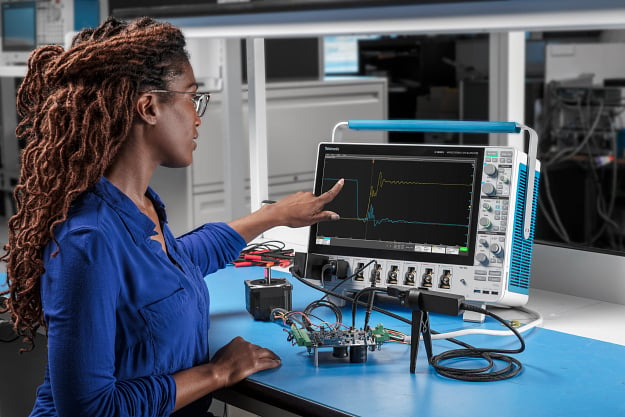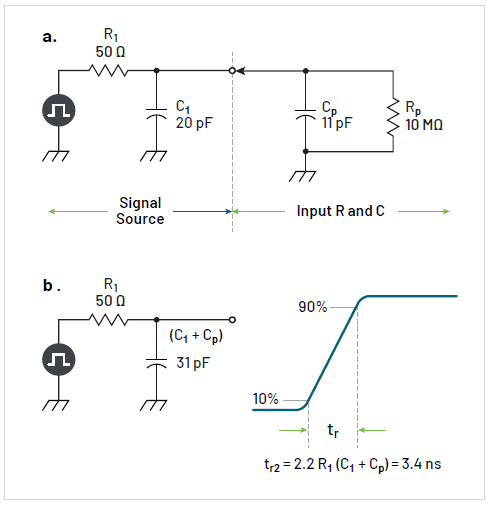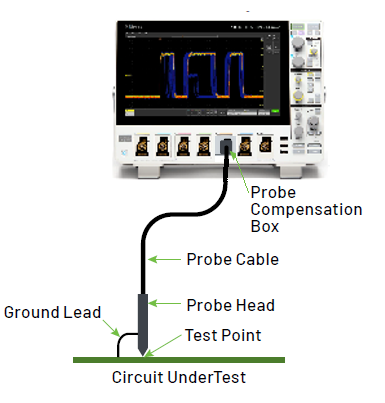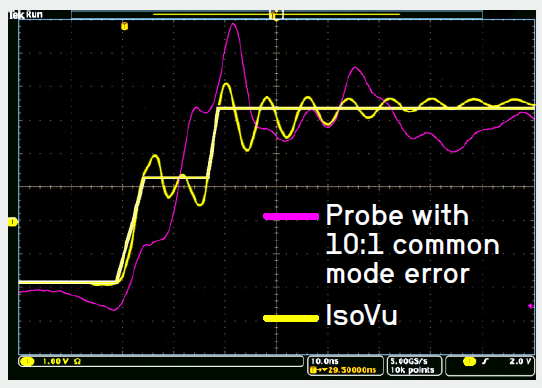Scope ADC Resolution is Nothing Without Good Probes

Key Factors Determining the Accuracy of Electrical Signal Measurement
Measurement accuracy is often misunderstood as being solely dependent on the specifications of the instrument, such as the number of waveforms displayed on its screen. However, true accuracy is much more complex. It is closely tied to how well the measurement setup preserves the integrity of the signal being measured. The effectiveness of any measurement ultimately depends on maintaining the signal's integrity throughout the measurement process.
To achieve accurate signal measurements, oscilloscopes must be connected to the electronic circuit under test via probes. Probes play a critical role in ensuring the signal reaching the oscilloscope is clean, undistorted, and as close as possible to the original signal circulating in the circuit. Without proper signal conditioning, even a high-resolution oscilloscope can yield misleading results, rendering it less effective in practical measurement scenarios.
Oscilloscope Accuracy: More Than Just ADC Resolution
There is no single parameter that defines how accurate an oscilloscope is when measuring a signal. One of the most common misconceptions is confusing accuracy with the resolution of the oscilloscope's ADC (analog-to-digital converter). While higher ADC resolution provides more discrete levels to represent the signal, it doesn’t account for real-world challenges like noise, distortion, or the quality of the signal path feeding into the ADC.
To get a more realistic picture of measurement accuracy, the Effective Number of Bits (ENOB) is often used. ENOB considers noise, distortion, and other imperfections that affect the oscilloscope’s front-end measurement chain. However, the measurement chain doesn’t start at the oscilloscope connector; it begins with the probing system. Achieving a high ENOB requires not only a good oscilloscope but also excellent signal conditioning throughout the probing system. In some cases, a lower-resolution oscilloscope with high-quality probes and proper signal conditioning can provide more accurate results than one with higher nominal ADC resolution but poor signal conditioning.
Essential Characteristics of Probes for Accurate Measurement
To ensure that the signal reaching the oscilloscope is minimally degraded, two key factors must be considered: the specifications of the probe and the skill of the engineer using it. Different types of probes have specific characteristics that are crucial for proper signal conditioning in various applications.
For instance, passive probes are often underestimated in terms of their importance. These probes are designed to attenuate the signal before it reaches the oscilloscope, protecting the front end from exceeding its input voltage limits. Passive probes with 1 MΩ impedance are ideal for high-impedance circuits, as they measure the signal with minimal disturbance. However, passive probes also need to offer minimal capacitive loading and wide bandwidth to align with the oscilloscope’s input bandwidth. For example, the Tektronix TPP1000 passive probe offers 1 GHz bandwidth with less than 4 pF of capacitive loading, which helps preserve signal integrity.

In high speed digital signal applications, passive probes are not the ideal choice since they overload the circuit and limit the signal bandwidth. For this reason, we offer active probes with accurate built-in amplifiers that also prove a low impedance load to the circuit and maintain signal fidelity. In some cases, the widest possible bandwidth and the highest voltage capacity are required by the application, as in fast switching power electronics enabled by wide bandgap technologies.
This is probably the clearest case to explain why the “scope + probe” chain matters way more than the scope ADC pure resolution. In fact, in these scenarios, it is mainly the probe itself that rejects noise and interference in noisy environments or when dealing with small differential signals buried in large common-mode noise. Tektronix active probes’ low input capacitance and high input impedance mean the probes have minimal loading effect on the circuit under test. This is crucial for maintaining the integrity of the signal and ensuring that the measurement itself does not alter the behavior of the circuit. In same cases galvanic isolation is necessary to achieve common mode rejection performance across a wide bandwidth as in fast switching power electronics testing enabled by wide bandgap new materials.
Signal Path and the Measurement Chain
The importance of the measurement chain extends beyond the body of the probe. The entire signal path—including cables, adapters, and probe tips—plays a crucial role in maintaining signal accuracy. Proper shielding, isolation, and the avoidance of ground loops are necessary to prevent common-mode noise from distorting the signal.
Each specific measurement scenario requires a well-designed probing system, including appropriate tips and attachments optimized for different types of test points, such as fine pitch leads or test pads. Using the correct tip ensures that the signal is captured without introducing additional resistance, capacitance, or inductance, which could distort the measurement.


Conclusion: Signal Conditioning for Accurate Measurements
While oscilloscope resolution is an important factor in signal measurements, it is not the only consideration. If the signal is compromised before reaching the oscilloscope due to poor signal conditioning, even a high-resolution instrument will produce inaccurate results. Proper signal conditioning through the use of high-quality probes ensures that the signal’s integrity—its amplitude, frequency, and phase characteristics—are faithfully transmitted from the circuit under test to the oscilloscope. This prevents the introduction of noise, distortion, or loading effects, allowing for more reliable and accurate measurements.
View our complete line of probes or contact sales to discuss the best probe for your needs.


